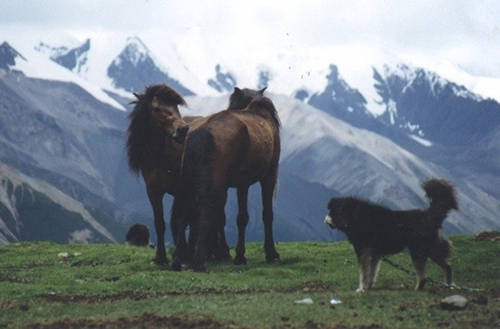Type the name of the breed you're looking for below
[wpdreams_ajaxsearchlite] Don't see the breed your're looking for? Click here and let us know!
Hequ horse
| Country Of Origin | China |
| History and Background | The Hequ has a comfortable and established position in the history of China; in fact, it has been known by a great variety of names over the centuries. The Hequ is also one of the most numerous breeds in China. The name "Hequ" has only been used for the breed since 1954; prior to that it was called a variety of names, including Nanfan (now a common name for a Tibetan horse breed) and Tu-fan (a breed used in war). Lauded for its various aptitudes and ability to thrive in cold environments (essential for the rough terrain of China), the modern Hequ is a result of crossing Hequ stock with the Dawan and Datong breeds. This has immensely improved the quality of the current Hequ horse breed, both in its appearance and performance. Today, the Hequ horse breed is among the most common in China. Its current population is estimated to be at 200,000. |
| Use Today | Pleasure riding horse, Cart horse, Riding horse, Competition horse, Draft horse |
| Characteristics | The Hequ breed is classified into three distinct varieties: the Jiaoke, Suoke, and Kesheng. The gray-coated Jiaoke has strong hooves and head. The Suoke, which is commonly found in the Sichuan province, has a wide head and ears. The Kesheng, meanwhile, is commonly crossbred with other horses, especially in Qinghai. Regardless of the variety, however, a Hequ body form is considered well-defined. Its elongated withers are slightly higher than the croup, which are somewhat bent downward. The Hequ also has stable hooves and a broad chest, which accentuates the height of the withers. The facial features of the Hequ render it facially distinct and, therefore, easy to identify. The ear, nostrils, and eyes are wide, while the muzzle is quite small. |
| Personality and Temperament | What makes the Hequ breed so popular is its ability to serve many purposes, including riding, racing, traveling, and draft work. In fact, with rigid and focused training, the Hequ can carry as much as 240 pounds for over 600 miles. |
| Other Considerations | The Hequ breed, which fully matures by its third year, not only thrives in elevated regions with cold temperatures, it prefers it. Overall, the Hequ is considered a horse breed that requires minimal care. |



